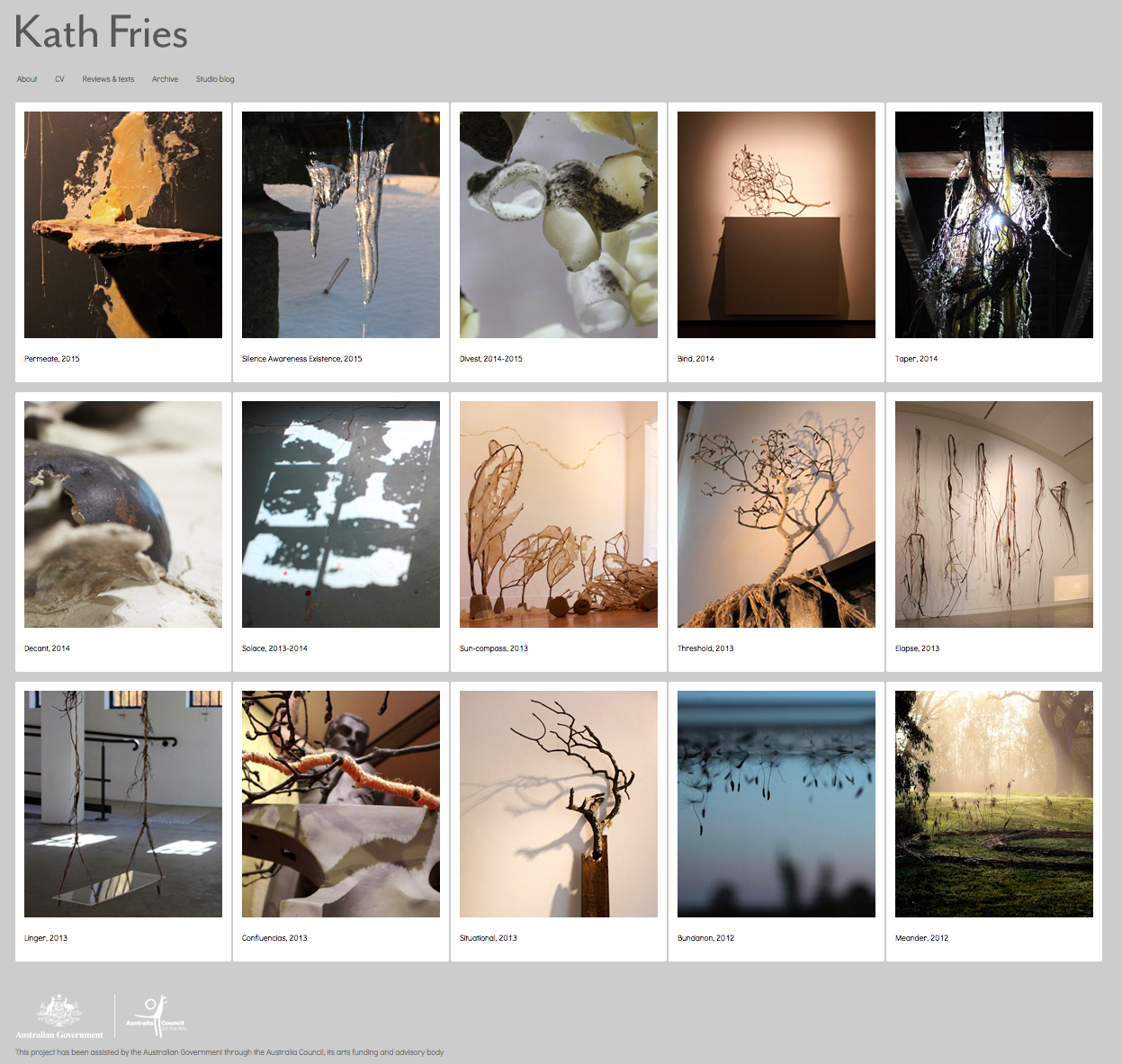 |
| Kath Fries, Divest, 2014, beeswax and ash, detail view, SCA Galleries |
ACCREATION: UN-BECOMING AND THE SURFACE AS SIGHT
Niall Robb, Laura Hunt, Kath Fries,
Alma Studholme and Charlotte Richardson
Verge Gallery, Darlington NSW
Opening 6-8pm Thursday 18 June, continues to 11 July 2015
Accreation: Un-becoming and the Surface as Sight brings together five artists from disparate practices, each exploring surface as a site of the imperceptible, and the space between process and actualization of work. Robb understands surface as a sight of enchantment, coupling the circulatory nature of moving image with the materiality of surface to explore the imperceptible in a space between reality and mythology. Richardson’s bespoke jewelry pieces explore the everyday, collapsed and reformed. Her up-cycled domestic plastic products hold an uncanny sensibility, forming a new relationship with the viewer via the mirrored surface. Hunt’s practice is based in the documentation of action, she takes imperceptibility of sound as an ever-evolving and circulatory surface. Fries installations looks at the ephemerality of the physical surface as a site of creation, suggesting impermanence and transience. In Firing Enzo, Studholme draws on the properties and processes of the ceramic material. In the process of documenting her work, Studholme reveals slippage inherent in process, and the impossibility of control. The resulting works transform the gallery into a many-layered space of to uncover and re-imagine the surface of things.
 |
| Kath Fries, Divest, 2014, beeswax and ash, detail view, Articulate Project Space |
For this exhibition I will be installing a rendition of Divest, my beeswax and ash sculptural installation series that explores uncontainablity and porous intersections between artifice and nature. In this work, beeswax polyp forms cluster in a vertical crevice, seemingly seeping inwards to gradually invade the gallery space. These aromatic translucent shapes suggest embodied presence but their surfaces are smattered with ash, which in turn conjure a sense of uneasiness, vulnerability and loss.
The engagement with process and space in Divest, reflects my practice of tracing the impermanence of present experience, as an ongoing tangible engagement with the passage of time and fragility of life. Working with tactile materials to explore interconnections between our senses and our surroundings, this sculptural installations is quiet, sensitive engagements with site and materiality.
 |
| Kath Fries, Divest, 2014, beeswax and ash, detail view, SCA Galleries |
ACCREATION: UN-BECOMING AND THE SURFACE AS SIGHT
18 June - 11 July 2015
City Road, Darlington, NSW 2006
Enter via: Jane Foss Russell Plaza, University of Sydney
Open: 10-5 Tues to Fri, 11-4 Sat


































%2BWhite%2C%2BBRANCH%2B3d.jpg)














.jpg)














